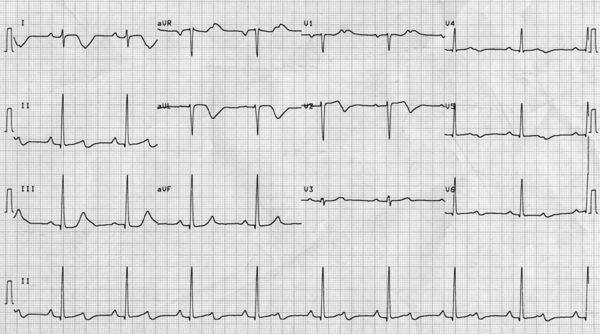And what about the ECG: Difference between revisions
Jump to navigation
Jump to search
m New page: {{NHJ| |mainauthor= '''A.A.M. Wilde, R.H.J. Peters''' |edition= 2006:09,315 }} Figure 1|thumb A 63-year-old lady presented with episodic chest pain wi... |
mNo edit summary |
||
| Line 24: | Line 24: | ||
[[Puzzle_2006_9_315 Answer|Answer]] | [[Puzzle_2006_9_315 Answer|Answer]] | ||
Latest revision as of 19:15, 8 October 2007
| Author(s) | A.A.M. Wilde, R.H.J. Peters | |
| NHJ edition: | 2006:09,315 | |
| These Rhythm Puzzles have been published in the Netherlands Heart Journal and are reproduced here under the prevailing creative commons license with permission from the publisher, Bohn Stafleu Van Loghum. | ||
| The ECG can be enlarged twice by clicking on the image and it's first enlargement | ||

A 63-year-old lady presented with episodic chest pain without specific triggers (in particular no relation with exercise). Physical examination revealed no abnormalities. The ECG is shown in figure 1. An echo was normal and so were the coronary arteries upon coronary angiography. Her family history revealed no coronary artery disease, sudden death, epilepsia or syncope. She herself had never had a syncopal episode either.
A causal reason for the chest pain could not be identified. Coronary artery disease seems unlikely. The abnormalities on the ECG persisted during the admission period which lasted a couple of days.
What to do?